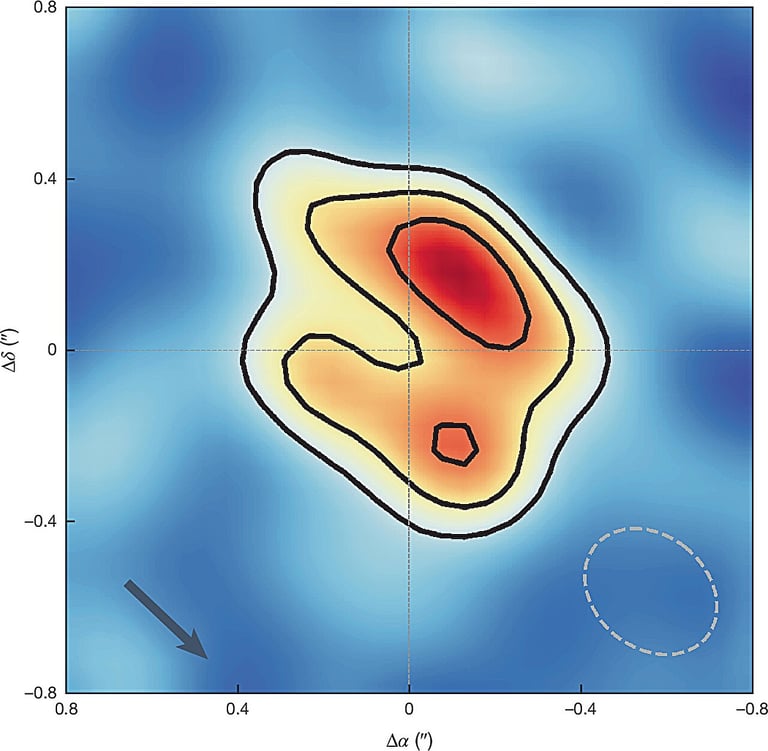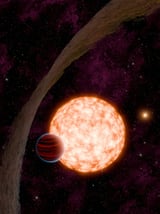Astronomers Discover Youngest Planet Using Transit Method, Challenging Planetary Formation Models
November 20, 2024
Nicknamed TIDYE-1b, the planet orbits its star every 8.83 days at a distance roughly one-fifth that of Mercury from the sun, and has a radius approximately 10.7 times larger than that of Earth, with about 30% of Jupiter's mass.
The planet was detected using the transit method by NASA's TESS space telescope, which identifies dips in a star's brightness caused by a planet passing in front of it.
The misaligned disk configuration presents a challenge to existing models of planetary formation, which typically expect a flat arrangement of forming planets.
The star hosting this planet exhibits unusual features, including a misaligned outer protoplanetary disk and a depleted inner disk, which enabled astronomers to observe the transiting planet.
This discovery establishes a new benchmark for understanding young transiting planets and the dynamics of protoplanetary disks, enhancing our knowledge of planetary formation and evolution.
The study detailing this discovery was published on November 20, 2024, in the journal Nature, highlighting the importance of observing young transiting systems to understand the history of planetary formation.
This significant finding is remarkable because young, close-in planets are often obscured by the protoplanetary disks that surround them.
The unique characteristics of this system make it an ideal target for studying the processes of early planet formation, with future observations potentially conducted using the James Webb Space Telescope.
Researchers believe that TIDYE-1b is unlikely to become a gas giant like Jupiter; instead, it may evolve into a 'mini-Neptune' or a 'super-Earth,' which are common types of planets found in other solar systems.
Astronomers have made a groundbreaking discovery of a newly forming planet, IRAS 04125+2902 b, which is only about 3 million years old, setting a record for the youngest planet observed using the transit method.
The discovery of IRAS 04125+2902 b provides valuable insights into the early stages of planetary formation, suggesting it may represent a precursor to the super-Earth and sub-Neptune planets that frequently orbit main-sequence stars.
Initial assumptions about the disk's warping were linked to the gravitational influence of a companion star, but this theory was ruled out as the secondary star's orbit aligns with the inner disk and planet.
Summary based on 11 sources
Get a daily email with more Science stories
Sources

Nature • Nov 20, 2024
Newborn planet found in a warped system
Yahoo News • Nov 22, 2024
Fast-forming alien planet has astronomers intrigued
Phys.org • Nov 20, 2024
Young planet discovery could provide new insight into planet formation
Digital Trends • Nov 20, 2024
Scientists discover a baby exoplanet "just" 3 million years old | Digital Trends